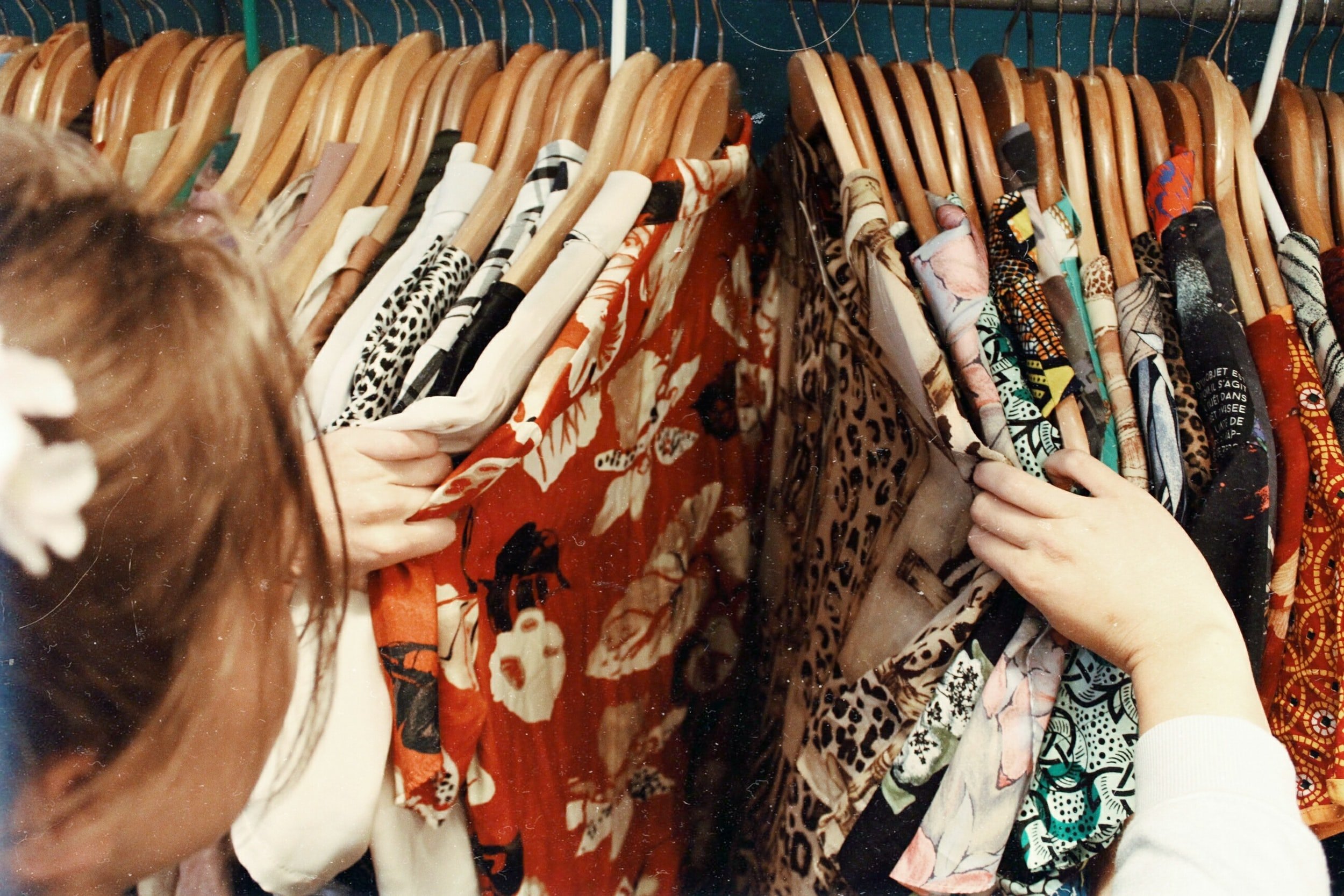Let’s Talk: REDUCE Alleviating Water Demand Through Conservation & Efficiency Measures
a 4-R Integrated Approach to water management Series Oct 21, 2021Lake Mead behind Hoover Dam with visible water line. Photo: Ricardo Frantz
We use water now more than ever before, from growing food and irrigating landscapes to making clothing and even producing the technology we use every day. Water is a part of every lifecycle, including our own. In Los Angeles, the challenge is not that there's no water but that we have royally mismanaged our resources, which are dwindling to the point of no return. Our recent blog, the 4-R Integrated Approach to Water Management, discussed how we can modernize our water infrastructure and move towards water independence through a local, climate-resilient, and affordable water portfolio. The first "R" of our approach, 'Reduce,' is critical to alleviating water demand through conservation and efficiency measures, which can lead to a more water secure and climate-resilient LA.
Why is Reducing Water Use Important?
Photo: Jordan Hopkins
California is no stranger to drought- we recently experienced a drought spell from 2012-2016. As a drought-prone region, the City of Los Angeles has had to change its habits to conserve our precious resources, and over the years, LA has made great strides in water conservation! However, the impacts of the Mega-Drought are unmatched. Our snowpack is at record lows, and the reservoirs from which we obtain most of our drinking water are at their lowest levels ever. For example, at Lake Mead, a reservoir on the Colorado River, water levels have fallen so low that officials have declared the first water shortage. The gravity of this situation promoted Gov. Gavin Newsom to ask Californians to voluntarily reduce water usage by 15%, a plea he reiterated just yesterday. Yet, according to the Los Angeles Times, despite the Mega-Drought's stronghold over the West, water use across much of Southern California only dropped by 0.1% overall and actually increased by 0.7% in Los Angeles County.
Downtown LA overlooking Echo Park Lake. Photo: Gerson Repreza
While these figures are not promising, Angelenos have proven that they can lower water use. Per capita water use in Southern CA decreased during the 2012-2016 drought period. In the City of Los Angeles, water usage in 2020 was below the average amount of water usage in the 1970s and saw a 29% reduction between 2003-2020. Through conservation programs and water use efficiency measures, LA has slowly become more water-efficient over the years! Today, the City has actively managed to reduce its per capita demand to nearly its 2035 goal of 100 gallons per capita per day (GPCD), a full 15 years ahead of schedule! But as good as LA has done relative to its own goals and even when compared against major cities throughout California and the United States, we still lag behind international best practice, which ranges between 50-70 GPCD. And many cities throughout the region have a worse track record than LA. Even worse, water use is on the rise again, and with hotter conditions and low precipitation from worsening climate change, we are looking at a recipe for disaster.
While lowering our water use will not bring back our snowpack, it can relieve pressure on our dwindling water sources. For a city that has historically done so well in conserving water, we are still falling short during a time of crisis- but what more can one do?
Reducing Water Use at the Individual Level
It isn't very comforting to think about a life without water, and even more so to literally see our water sources drying up before our eyes. Of all the 4R strategies, conservation (or Reduce) must always come first. Every drop of water that's not used is a drop that does not need to be imported from our dwindling supply sources; a drop that doesn't have embedded energy and costs from water pumping, treatment, and heating; and (for outdoor use) a drop that won't contribute to the nearly 100 million gallons a day of contaminated runoff that makes this the #1 source of pollution to our local waterways. But what can individuals do to address our water use issues?
The answer is A LOT! Whether it's by installing high-efficiency toilets, shopping sustainably, or making behavioral changes like cutting back on shower time, individual actions make a difference. Here are a few more ways one can reduce their daily water use even further, courtesy of Everyday Eco-Habits and LA County Waterworks District:
Calculate your water footprint
If it's yellow, let it mellow. Don't immediately flush your pee.
Go 'Dirty for the Drought,' and hold off on washing your car. When you're ready, take it to a car wash that recycles its water.
When possible, shop sustainably. Fast fashion contributes to water pollution and wastewater.
Don't be a grasshole! Water plants early in the AM or at night.
Use a broom to sweep down your driveway or porch instead of hosing it down.
Have a pool or spa? Cover them to reduce evaporation and save energy.
Replace your turf or grass with a water-friendly garden with drought-tolerant plants. Not only will it be less of a hassle, but it also provides a myriad of other benefits, including reduced urban runoff pollution and creating habitat for our critters!
Install water-efficient equipment throughout your home, i.e., water-efficient showerhead, toilet, etc.
According to the LA Department of Water & Power, Angelenos use less water today than they did more than 50 years ago, despite a population increase of over one million people. Clearly, water conservation messaging resonates, and by adopting a few more eco-friendly habits, we can contribute toward sustainable water management. Just think – if everyone in LA County dropped just 10 more gallons of water per person per day, we would save 40 BILLION gallons of water annually...meaning we won't need to invest in expensive and energy-intensive water alternatives.
“We don’t know what next year holds, so we need to make water conservation a way of life. ”
Ringing the Alarm for Conservation Policies and Regulations
Ariel view of the Sacramento River Delta. The Sacramento River is part of the State Water Project through which LA receives water.
While there are many ways to reduce water use at the individual level, we need more robust water conservation measures implemented. In 2014, former Governor Jerry Brown released the CA State Water Action Plan, a five-year roadmap outlining 10 broad actions required to manage water resources sustainably. Part of this plan was Executive Order B-37-16: Making Conservation a California Way of Life, which set forth an action plan to use water more wisely, eliminate water waste, strengthen local drought resilience, and improve agricultural water use efficiency and drought planning. Since the passage of this Executive Order and then through the passage of statewide conservation legislation in 2018, California agencies have made incredible strides in reducing water use to no longer have to purchase costly and energy-intensive imported water.
However, while a leap in the right direction, these state conservation efforts are not enough given the Mega-Drought our region is now facing. Next year, we expect to start with a 0% allocation from the State Water Project – one of the systems through which Southern California obtains water from Northern CA. 0% allocation means we’ll not be receiving additional water supply from Northern CA. To mitigate supply (or, more accurately, lack of supply) issues, Los Angeles Mayor Eric Garcetti has announced that the city will be shifting water supplies and obtaining additional water from the Colorado River, which will be stored by the Metropolitan Water District of Southern California. Although this means more water this year, shifting to more reliance on the Colorado River is a short-term solution to a long-term problem. It addresses our need for water now but does not address the fact that:
Our water is running out
We are still tapping into a significantly depleted source
Our method for transporting that water contributes to climate change
If we push our elected and agency officials to implement more aggressive conservation goals, we can move closer toward water independence.
The Colorado River. LA receives a portion of its drinking water from the river. Photo Leslie Cross
Here are several actions our decision-makers can and must take to reduce water consumption and achieve a more sustainable water supply.
Implement aggressive MANDATORY conservation measures immediately for cities and agriculture. Drought after drought, we ‘learn’ one thing...that calling for voluntary conservation doesn’t work.
Dramatically expand funding for water conservation through programs like MWD’s Local Resources Program or LADWP’s rebate programs, both to implement their own projects and to incentivize residential, commercial, and industrial water conservation.
Explore ways to change pricing and business models so that conservation is actually incentivized. Currently, agencies still largely operate by selling water, which means conservation undermines their bottom lines; additionally, state laws actually hinder our ability to fully implement conservation pricing that rewards our most conscientious residents while penalizing water hogs.
Prioritize water conservation above all (adopting a ‘water loading order’ similar to how the energy sector works), and plan for a reduced water future. Even today, knowing how successful we can and have been with water conservation and understanding how dire our situation is, most of our water agencies adopt Urban Water Management Plans (UWMPs) that increased water use in the region. As LA Waterkeeper pointed out in our comments on agency UWMPs, we need to prepare for a very different future to understand better what needs to be done.
Implement widespread educational campaigns about drought and conservation, with greater transparency on who manages our water in the West, so Angelenos can ask agencies directly to make a change.
Revisit and revise the “Making Conservation a California Way of Life” legislation to be more aggressive with deadlines and targets that reflect the severity and urgency of our water crisis.
Explore any and all other actions that will make our region an international leader in water conservation, whether it requires holding our agricultural water users accountable to a conservation agenda; net-zero water use for any new development; penalizing our biggest water wasters; investing in upgrading our water infrastructure to reduce leakage (and create new jobs), and other innovative programs being adopted across the globe to reduce water use and waste.
Big Picture (Why should we ‘Reduce’?)
Focusing on developing LA’s local water portfolio and furthering conservation will help ensure LA has a thriving and sustainable water supply. In response to the worsening drought conditions, water conservation can help alleviate the demand and apply efficiency measures that can be followed for years to come. Reducing water use is something all individuals can do, and hence the first R in our 4-R approach. However, the public must also demand more leadership from our elected and agency officials to promote fundamental system change. Up next in our 4-R approach is Reuse. How can we reuse urban and stormwater runoff to achieve sustainable and climate-resilient water supply?
Find out in our next blog, diving into the 2nd R of our Integrated Water Management Approach.











